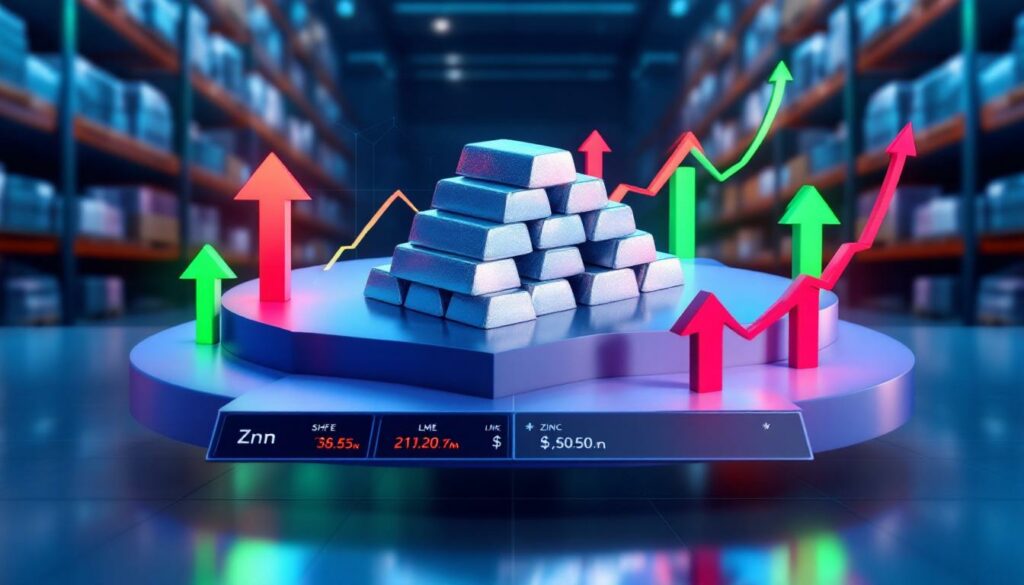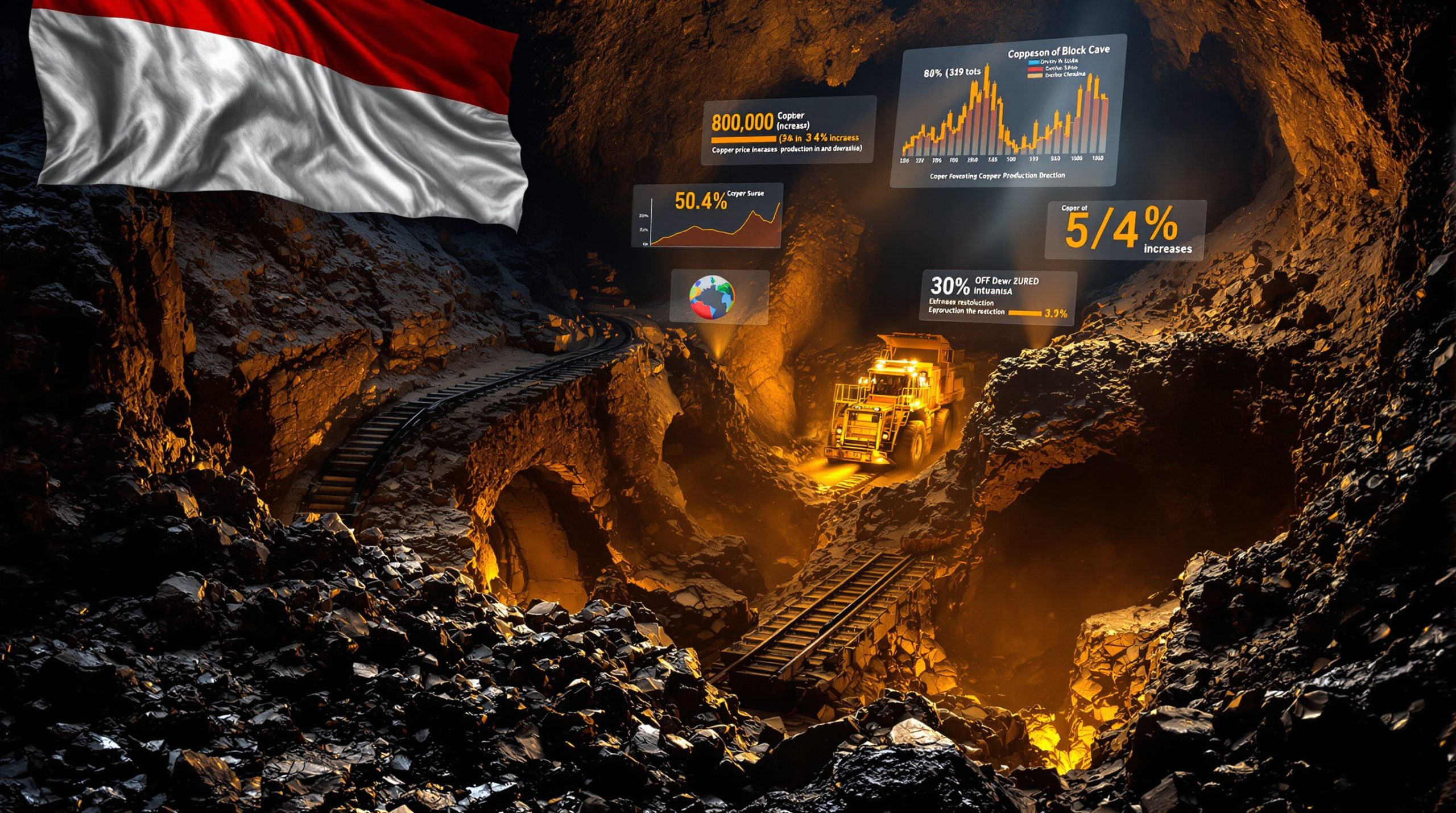What's Driving the Current Zinc Market Fluctuations?
The zinc market is currently navigating through a period of sideways trading, characterized by technical range-bound price action and fundamental pressures. Recent data from Shanghai Metal Market (SMM) shows SHFE zinc maintaining a fluctuating pattern while social inventories continue their upward trajectory. This market behavior stems from the complex interaction between robust supply fundamentals, seasonal demand weakness, and broader macroeconomic influences affecting the zinc trading landscape.
Current SHFE Zinc Price Performance
The most-traded SHFE zinc 2508 contract recently closed at 22,330 yuan/mt, recording a minimal gain of just 5 yuan/mt (0.02%) in recent trading sessions. This modest movement came with declining market participation, as trading volume decreased to 47,375 lots while open interest fell by 294 lots to 128,000 lots total. Technical analysis reveals a bullish candlestick pattern forming on charts, with prices finding reliable support at the 5-day moving average.
"The current rangebound trading in SHFE zinc reflects a delicate balance between consistent production output and seasonal demand fluctuations," notes market analysis from SMM. "Until we see meaningful inventory drawdowns, upside potential remains technically limited."
LME Zinc Market Conditions
In contrast to the marginally positive SHFE performance, LME zinc recently closed at $2,738/mt, registering a decrease of $15/mt (0.54%). The international market showed similar signs of reduced participation, with trading volume falling to 6,367 lots and open interest decreasing significantly by 2,486 lots to 207,000 lots. From a technical perspective, LME zinc has formed a bearish candlestick pattern but continues to find support around the 10-day moving average.
The divergence between domestic Chinese and international zinc markets highlights the localized nature of current market drivers, with regional factors increasingly influencing price direction on both exchanges.
How Are Zinc Inventories Affecting Market Dynamics?
Rising Social Inventory Levels
Social zinc ingot inventories have emerged as a key bearish factor in the current market environment. According to SMM data, total zinc ingot inventory stands at 82,400 metric tons as of July 4, 2025, having increased by 1,800 metric tons month-over-month. This consistent accumulation pattern has been developing despite typical seasonal factors that would normally limit inventory builds.
Industry analysts note that inventory levels now exceed the five-year seasonal average for early July, creating persistent downward pressure on prices. The accumulation pattern has been particularly notable in major Chinese trading hubs, where warehouses report steady inflows.
"Domestic zinc ingot inventory buildup continued through early July, reflecting the fundamental imbalance between strong supply and weak demand during the seasonal lull period," reports SMM.
Supply-Demand Imbalance Factors
The current inventory accumulation stems from multiple factors creating a supply-demand mismatch:
- Robust smelter output: Chinese zinc smelters continue operating at high utilization rates (approximately 85-90%) despite weaker prices
- Seasonal demand weakness: Construction and galvanizing sectors experiencing typical summer slowdown
- Import dynamics: Favorable arbitrage windows periodically encouraging metal flows into China
- Transportation improvements: Enhanced logistics networks enabling more efficient distribution and stockpiling
This imbalance has been particularly pronounced in recent weeks, with refined zinc production outpacing consumption by an estimated 4,000-5,000 metric tons weekly, according to industry sources.
What Macroeconomic Factors Are Influencing Zinc Prices?
Impact of U.S. Economic Indicators
Recent U.S. economic indicators has emerged as a significant driver of zinc market sentiment. June's non-farm payrolls increased by 147,000 jobs, exceeding market expectations and signaling continued labor market resilience. This strong employment data has had several knock-on effects for the metals market:
- Cooled expectations for immediate Federal Reserve interest rate cuts
- Strengthened the U.S. dollar index, creating headwinds for dollar-denominated commodities
- Reduced investor appetite for risk assets amid reassessment of monetary policy outlook
- Created uncertainty regarding industrial metals demand projections
The relationship between U.S. economic indicators and base metal forecast insights has become increasingly pronounced as markets closely monitor signals that might influence Federal Reserve policy decisions in the coming months.
Interest Rate Expectations and Metal Markets
The changing interest rate outlook has emerged as a critical factor for zinc and other base metals. Strong economic data has significantly reduced the likelihood of imminent rate cuts, with market participants now pricing in a later start to the easing cycle than previously anticipated.
This shifting monetary policy landscape affects zinc markets through several channels:
- Dollar strength: Higher relative interest rates support the dollar, making metals more expensive for non-dollar buyers
- Financing costs: Elevated rates increase the cost of carrying metal inventories
- Investment flows: Reduced risk appetite among financial participants seeking yield elsewhere
- Economic outlook: Concerns about demand destruction in rate-sensitive sectors like construction
"The correlation between zinc prices and interest rate expectations has strengthened considerably in 2025," notes market analysis. "Technical traders are increasingly factoring macroeconomic signals into their positioning decisions."
How Are Technical Indicators Shaping Zinc Price Movement?
SHFE Zinc Technical Analysis
Technical indicators for SHFE zinc reveal a market searching for direction amid conflicting signals:
- A bullish candlestick pattern has formed on daily charts, suggesting potential upside momentum
- Prices have established reliable support at the 5-day moving average, creating a technical floor
- Trading range has consolidated between 22,260-22,365 yuan/mt, creating clear entry/exit points
- Momentum indicators show neutral readings, reflecting the balanced market forces
- Volume profile indicates strongest participation at range extremes
These technical patterns suggest continued rangebound conditions until a fundamental catalyst emerges to break the equilibrium. Market technicians note that the narrowing Bollinger Bands (20-day) indicate decreasing volatility and potential energy building for a directional move.
LME Zinc Technical Outlook
The international LME zinc market displays a somewhat different technical picture:
- A bearish candlestick pattern has emerged on daily charts, indicating selling pressure
- Prices are struggling to maintain momentum above key daily moving averages
- Support and resistance levels have narrowed to $2,734-$2,760/mt, compressing trading range
- Relative strength indicators suggest mildly oversold conditions in the short term
- Open interest reduction points to position unwinding rather than new directional bets
Technical analysts highlight the importance of the $2,700/mt psychological support level, which has held during previous tests. A break below this threshold could accelerate selling pressure, while recovery above $2,760/mt might signal renewed bullish momentum.
What's the Outlook for Zinc Prices in the Near Term?
Supply-Side Considerations
The supply outlook remains a critical factor for zinc price projections in the coming months:
- Production capacity: Chinese smelters continue operating at high utilization rates despite margin pressure
- Concentrate availability: Mining output has stabilized after earlier disruptions, ensuring adequate feed
- Treatment charges (TCs): Zinc concentrate TCs remain elevated at approximately $250-270/dmt, incentivizing processing
- Energy costs: Lower power costs in key producing regions supporting continued strong output
Industry analysts expect supply to remain robust through Q3 2025, with little evidence of production cutbacks despite the recent price weakness. This persistent production strength creates an ongoing headwind for significant price appreciation in the near term.
Demand Projections
Demand factors present a more mixed picture for zinc market outlook:
- Seasonal patterns: Traditional summer weakness likely to persist through mid-August
- Construction sector: Infrastructure projects showing uneven progress across regions
- Automotive production: Steady but not accelerating demand from galvanized steel applications
- Regional variations: Stronger consumption in Southeast Asia offsetting weakness in mature markets
"The typical seasonal demand recovery pattern suggests improved consumption metrics beginning in late August to early September," notes market analysis. "However, the magnitude of this recovery will depend heavily on construction sector activity and policy support in key consuming regions."
Market Sentiment Indicators
Current market positioning and sentiment metrics provide additional insight into potential price direction:
- Trading volume declines suggest cautious positioning among market participants
- Open interest reductions indicate position unwinding rather than new directional bets
- Options skew shows balanced put/call interest, reflecting uncertain directional bias
- Speculative positioning reveals relatively neutral stance among non-commercial traders
These sentiment indicators collectively point to a market in waiting mode, with participants reluctant to establish large directional positions until clearer fundamental signals emerge.
How Can Investors Navigate the Current Zinc Market?
Key Price Levels to Monitor
For traders and investors tracking the zinc market, several critical price levels deserve close attention:
- SHFE zinc support zone: Around 22,260 yuan/mt, coinciding with recent lows
- SHFE zinc resistance: Near 22,365 yuan/mt, where selling has consistently emerged
- LME zinc support: Crucial floor around $2,734/mt, below which could trigger stop-loss selling
- LME zinc resistance: Significant ceiling at approximately $2,760/mt, which has capped recent rallies
"The defined trading ranges provide clear risk parameters for market participants," notes technical analysis. "These levels have demonstrated their importance through repeated tests and reversals."
Risk Management Strategies
Given the current market environment, prudent risk management approaches include:
- Position sizing discipline: Limiting exposure due to heightened volatility potential
- Strategic inventory monitoring: Tracking weekly SMM and LME stock reports for trend changes
- Options strategies: Using defined-risk structures to express views with limited downside
- Basis trading: Exploiting periodic disconnects between physical premiums and futures prices
- Calendar spreads: Positioning for term structure changes as seasonal patterns evolve
Industry veterans emphasize the importance of maintaining flexibility in the current environment, as unexpected economic data or policy changes could quickly alter market dynamics.
FAQ: Understanding the Zinc Market Dynamics
What is causing zinc inventories to increase?
The current accumulation of zinc inventories is primarily driven by a combination of strong production output and weakening downstream demand during the seasonal lull period. Chinese smelters continue operating at high utilization rates (85-90%) despite margin pressure, while traditional summer slowdowns in construction and manufacturing have reduced consumption. This supply-demand imbalance has created persistent inventory buildup across major trading hubs, with weekly increases averaging 1,500-2,000 metric tons since early June.
How do U.S. employment figures affect zinc prices?
Strong U.S. employment data influences zinc prices through several interconnected channels. When job numbers exceed expectations (as with June's 147,000 gain), it typically reduces the likelihood of Federal Reserve interest rate cuts, strengthening the U.S. dollar. Since zinc and other base metals are priced in dollars, a stronger dollar makes these commodities more expensive for non-dollar buyers, creating headwinds for prices. Additionally, higher interest rates increase the cost of carrying metal inventories and can dampen economic growth expectations in rate-sensitive sectors like construction and manufacturing.
What technical indicators should zinc traders monitor?
Zinc traders should focus on several key technical indicators to inform their market approach:
- Moving averages: Particularly the 5-day, 10-day, and 20-day MAs that define short-term support/resistance
- Candlestick patterns: Formations like doji, engulfing patterns, and hammers that signal potential reversals
- Volume and open interest: Changes that confirm or contradict price movements
- Bollinger Bands: To identify periods of contracting volatility that often precede significant moves
- Relative Strength Index (RSI): For overbought/oversold conditions that may signal reversals
These indicators provide insights into market sentiment, potential price direction, and the strength of current trends when analyzed collectively rather than in isolation.
When might zinc demand improve from current levels?
Zinc demand typically follows well-established seasonal patterns, with improvement expected as construction and manufacturing activities increase after the current summer lull. Historical patterns suggest demand recovery beginning in late August to early September, coinciding with resumed construction activity and inventory restocking ahead of the fall consumption period. However, the timing and magnitude of demand recovery in 2025 will depend on several factors, including:
- Infrastructure spending implementation in major economies
- Construction sector activity, particularly in China
- Automotive production trends and steel galvanizing demand
- Policy support measures targeting metals-intensive industries
- Overall macroeconomic conditions affecting industrial activity
Comparative Analysis: SHFE vs. LME Zinc Performance
| Market Metric | SHFE Zinc | LME Zinc | Key Implications |
|---|---|---|---|
| Recent Price Movement | +0.02% | -0.54% | Domestic Chinese market showing relative strength |
| Trading Volume Trend | Decreasing (47,375 lots) | Decreasing (6,367 lots) | Reduced participation across both markets |
| Open Interest Change | -294 lots | -2,486 lots | More significant position unwinding in international market |
| Technical Pattern | Bullish candlestick | Bearish candlestick | Divergent short-term sentiment indicators |
| Support Level | 5-day moving average | 10-day moving average | Different technical support structures |
| Price Range | 22,260-22,365 yuan/mt | $2,734-$2,760/mt | Established trading ranges guiding near-term movement |
| Inventory Influence | Direct exposure to rising social stocks | Less immediate impact from Chinese inventories | Regional fundamentals creating performance divergence |
| Macroeconomic Sensitivity | Moderate | High | LME prices more responsive to global economic data |
The performance divergence between SHFE and LME zinc highlights the increasing regionalization of metal markets, with domestic Chinese factors sometimes creating different price trajectories than international influences. This divergence creates both risks and opportunities for market participants operating across both exchanges.
The ongoing fluctuations in social inventory of zinc ingots and SHFE zinc trend will likely continue to influence market dynamics in the near term. Meanwhile, longer-term outlook depends heavily on iron ore demand trends and broader energy transition dynamics, which affect industrial metal consumption patterns globally. For investors interested in base metals, copper market analysis provides additional context for understanding cross-market correlations.
Disclaimer: The analysis presented in this article is based on current market data and expert observations. Commodity markets are inherently volatile, and future price movements may differ from projections. Readers should conduct their own research and consider their individual risk tolerance before making investment decisions.
Ready to Spot Early Mineral Discovery Opportunities?
Discover significant ASX mineral discoveries before the wider market using Discovery Alert's proprietary Discovery IQ model, which turns complex data into actionable insights. Explore why historic discoveries generate substantial returns by visiting Discovery Alert's dedicated discoveries page and begin your 30-day free trial today.




